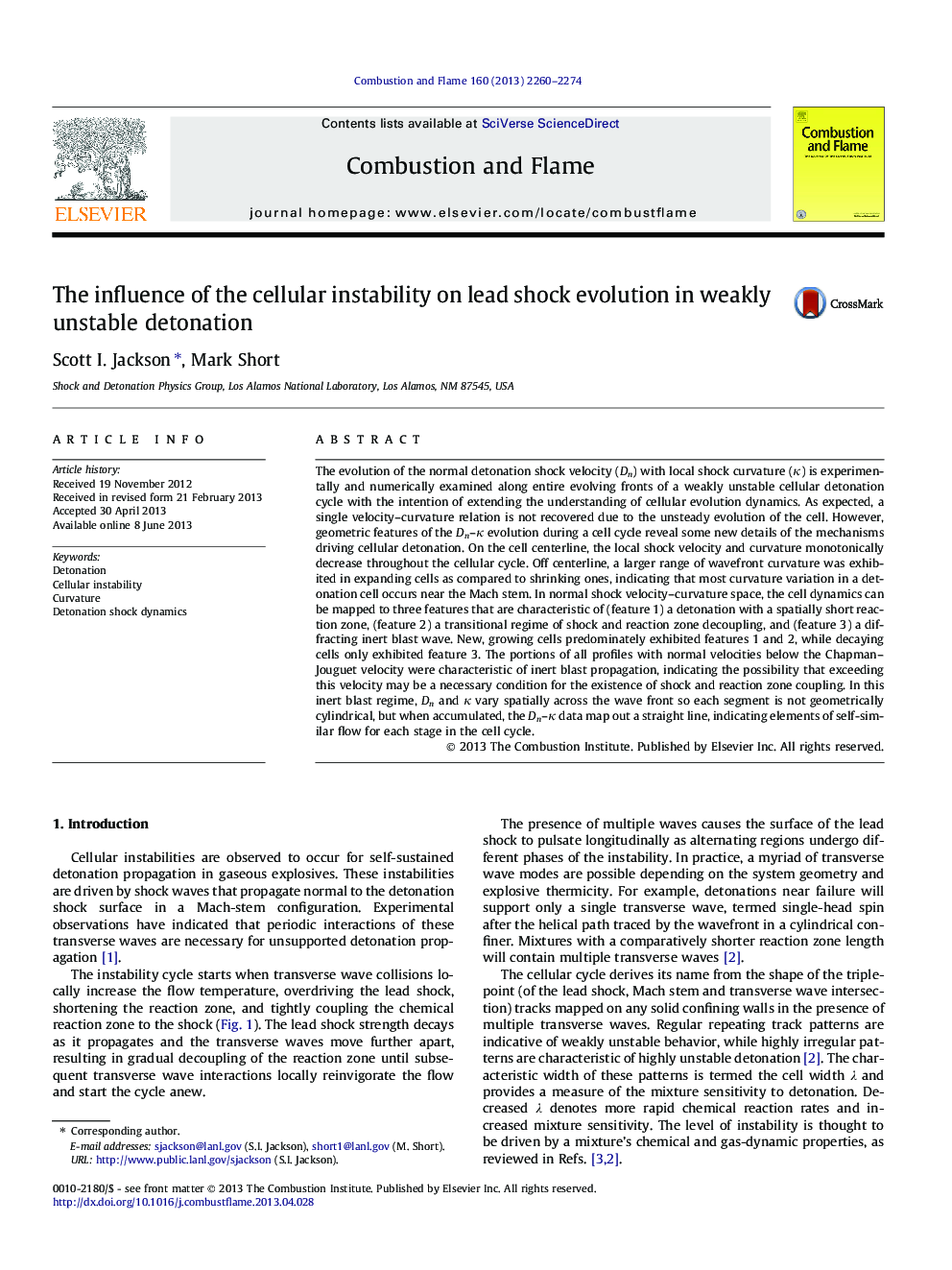| Article ID | Journal | Published Year | Pages | File Type |
|---|---|---|---|---|
| 10264825 | Combustion and Flame | 2013 | 15 Pages |
Abstract
The evolution of the normal detonation shock velocity (Dn) with local shock curvature (κ) is experimentally and numerically examined along entire evolving fronts of a weakly unstable cellular detonation cycle with the intention of extending the understanding of cellular evolution dynamics. As expected, a single velocity-curvature relation is not recovered due to the unsteady evolution of the cell. However, geometric features of the Dn-κ evolution during a cell cycle reveal some new details of the mechanisms driving cellular detonation. On the cell centerline, the local shock velocity and curvature monotonically decrease throughout the cellular cycle. Off centerline, a larger range of wavefront curvature was exhibited in expanding cells as compared to shrinking ones, indicating that most curvature variation in a detonation cell occurs near the Mach stem. In normal shock velocity-curvature space, the cell dynamics can be mapped to three features that are characteristic of (feature 1) a detonation with a spatially short reaction zone, (feature 2) a transitional regime of shock and reaction zone decoupling, and (feature 3) a diffracting inert blast wave. New, growing cells predominately exhibited features 1 and 2, while decaying cells only exhibited feature 3. The portions of all profiles with normal velocities below the Chapman-Jouguet velocity were characteristic of inert blast propagation, indicating the possibility that exceeding this velocity may be a necessary condition for the existence of shock and reaction zone coupling. In this inert blast regime, Dn and κ vary spatially across the wave front so each segment is not geometrically cylindrical, but when accumulated, the Dn-κ data map out a straight line, indicating elements of self-similar flow for each stage in the cell cycle.
Related Topics
Physical Sciences and Engineering
Chemical Engineering
Chemical Engineering (General)
Authors
Scott I. Jackson, Mark Short,
